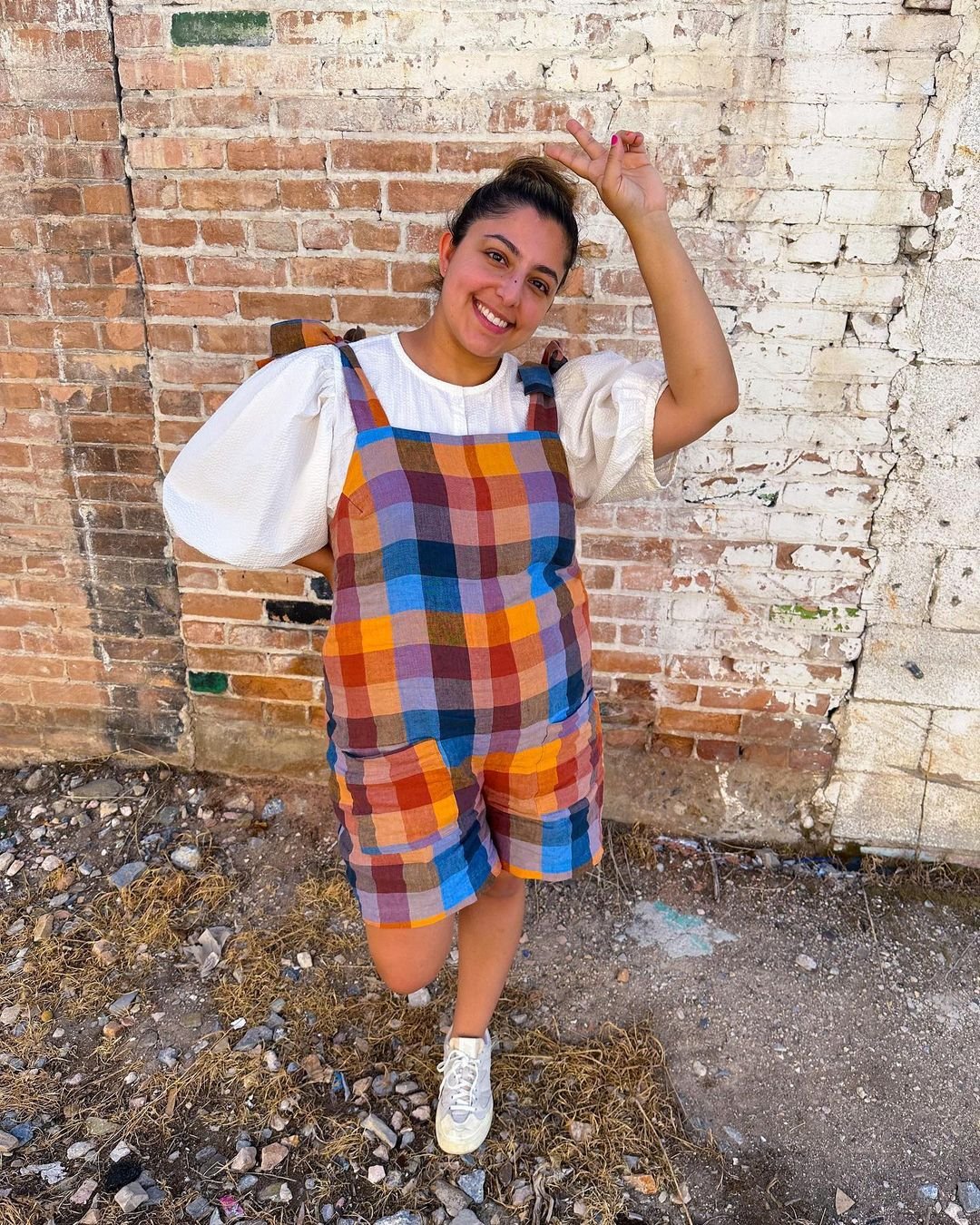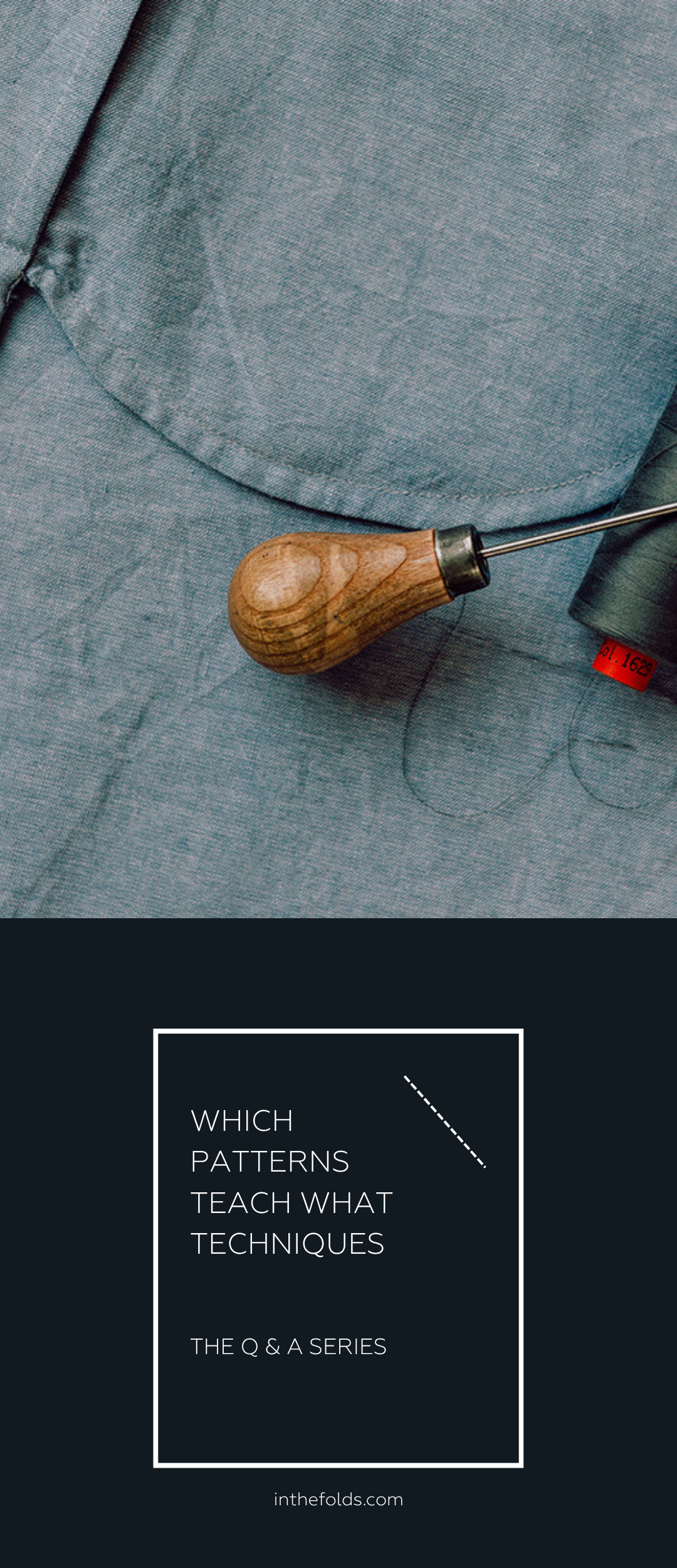THE Q & A SERIES
How to sew flat felled seams
Hi Emily,
I am really loving being a member of Curated. I’m learning a lot and it’s pushed me out of my comfort zone. Something I would like to suggest for an upcoming pattern is flat felled seams. I love the look of them and would love to give them a go. I know I could just try them out myself, but there’s something about getting a push from the monthly project that I know will encourage me to do it. And it’s always fun to do it along with the other ‘Foldies’ too.
Jennifer
Preston, UK
Hi Jennifer,
I am assuming you’ve seen our shiny new pattern, the Attwood pants, by now!
We are really excited about this one as it’s our first pattern that includes flat felled seams! We’ve covered French seams and bound seams in some of our other patterns, but never flat felled… so we thought it was about time we rectify that!
What is a flat felled seam?
Flat felled seams are one of the strongest seam finishes. The raw edge is enclosed inside the seam (like French seams), and then it's pressed flat and stitched to keep the seam nice and flat.
When should I use a flat felled seam?
Flat felled seams are suitable for hardwearing items such as jeans and jackets. You will also sometimes use this finish for making shirts. They can also be used as a design feature - as we have done with the Attwood pants.
Types of flat felled seams
There are various ways to sew flat felled seams and we have chosen the method we find the most straightforward. Flat felled seams can be sewn so that the seam is enclosed on the right side of the garment (Option 1) or on the wrong side of the garment (Option 2).
For the Attwood pants, we used the method that has the enclosed seam on the right side of the pants to make a feature of the flat felled seams. If you would prefer the alternative (enclosed seam on the wrong side of the garment), you can construct them that way. We suggest sewing samples of both options to work out your preference.
Flat Felled Seam Option 1
Seams sewn wrong sides together. Seam allowance is enclosed on the right side of the garment when the seam is complete. This is the method used throughout these instructions.
Flat Felled Seam Option 2
Seams sewn right sides together. Seam allowance is enclosed on the wrong side of the garment when the seam is complete.
How to sew a flat felled seam
Step 1
Pin the pieces you are joining together with wrong sides together. Stitch with a 1.2cm (½in) seam allowance (or what your pattern specifies).
Step 2
Trim down one side of the seam allowance to 6mm (¼in). The instructions will guide you as to which side to trim down. If sewing a sampler, you can trim down either.
Step 3
Press the seam open with the seam allowance pressed to one side.
Step 4
Turn the wider side of the seam allowance over the narrow side. The raw edge of the wider side should sit about 1mm back from the stitch line. Press well when you are happy with where the edge is sitting.
Step 5
Flip the seam allowance over to the other side of the seam, so that the raw edge is now enclosed in the seam. Press and pin through all layers.
Step 6
Carefully stitch close to the fold to complete the seam.
As you know, Jennifer, we’ll be going through everything with our Curated by ITF online community, so if you have any questions you definitely ask then! (And you’re right… it’s way more fun to do it together!)
Happy sewing,
Emily
RESOURCES MENTIONED IN THIS ISSUE
The Attwood pants pattern is the August 2023 project for our Curated by ITF membership, and can be purchased here, or after August by current members in our Past Issues section. More information about the subscription can be found here.
For patterns with French seams, try the Rennie dress, Whitlow robe or Collins top.
For patterns with bound seams, try the Hove jacket, Flynn jacket or Barkly skirt.
For more issues of the Q & A series, you can check out the archive here.
WHAT YOU’VE BEEN MAKING
Flynn jacket made by @saritha.sews
Peppermint playsuit made by @sewlike














